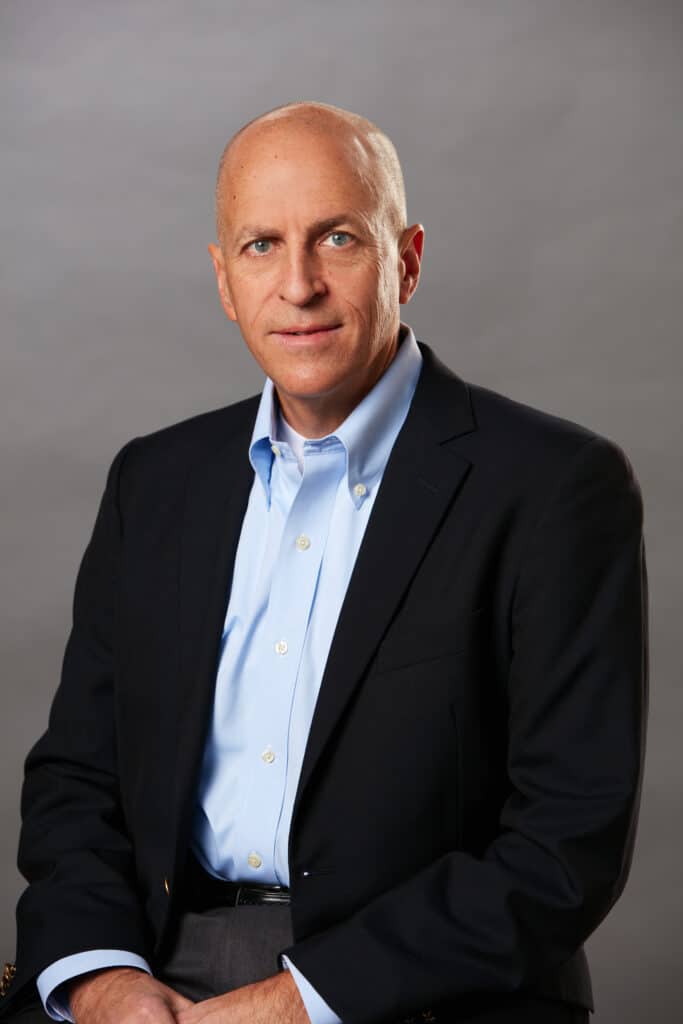Controlling the Costs of Deals

By Nushin Huq
11 min read
Affordable housing developers use creative approaches to deal with the rising cost of things, like insurance, utilities, construction and operations.
Controlling costs has always been important in the affordable housing industry but has taken on greater importance as the cost of deals has sharply increased since the COVID-19 pandemic. While some increased costs must be absorbed, developers are using all the tools available to them to control costs where they can, such as using standard and efficient designs or anticipating construction supply needs and sourcing materials ahead of time.

Rising Costs
Since 2021, several costs have gone up significantly on labor, utilities and insurance.
In 2021 and 2022, Ohio-based affordable housing developer, Woda Cooper Companies Inc., experienced an unprecedented 20 percent per year increase in construction costs, says David Cooper, company president. In 2023, the increase was lower, eight percent, but still a “massive increase.”
“There’s no question we’ve seen costs escalate, and there’s no question we and others are concerned about it,” Cooper says.
The large affordable housing developer owns and operates over 16,000 housing units in 17 states across the Midwest, Mid-Atlantic and Southeast. Since the start of the pandemic, like other developers, they’ve seen the price of commodities, such as lumber and copper skyrocket. The cost of labor, such as HVAC and plumbing professionals, has also increased significantly.

California-based AMCAL, has also seen significant cost increases. The vertically integrated developer has a portfolio of over 13,000 units in California, Washington and Texas. About 85 percent of its portfolio is affordable housing with the balance consisting of workforce, student and market-rate housing.
The industry has seen increased costs in insurance premiums, utility costs and staffing, says Michael McCloud, vice president of asset management. In addition to construction, expenses related to maintaining properties and completing unit turns—preparing units for the next resident—have also risen.
“Maintaining/controlling operating costs is one of the most critical elements of managing Low Income Housing Tax Credit properties,” McCloud says. “Because rents are typically prescribed by the Department of Housing and Urban Development, regulatory agencies and housing authorities, rental revenue for LIHTC projects is largely fixed.”

Design Costs and Site Selection
Design decisions and site selection play a significant role in keeping the cost of deals down. AMCAL’s designs are standardized for the different regions the company operates, says its president, Arjun Nagarkatti.
“By standardizing our design, though the skin of the building may change, both with our architects, as well as with our subcontractors, we can control costs as we minimize the change orders on the site,” Nagarkatti says. “Additionally, we survey our tenants after they move in to understand the livability of the design and tweak it to improve our product.”
Woda Cooper looks for land and zoning that allows it to build on smaller sites.
“Generally, the cost of the building is a function of the cost of the items to put it up,” Cooper says. “The variable is going to be site cost.”
A building on a two-acre site with a flat stacked design is more efficient design than townhomes built across eight acres. In addition to more land, there are more roadways, water infrastructure and sidewalks.
“That site cost is probably the area that we’ve got to focus on in terms of trying to control costs,” Cooper says. “We’ve got to fit more units into a smaller space to try to keep a lid on those costs.”
While the cost of supplies has increased, the company tries to buy materials, such as lumber, when it can get a good buy (reasonable prices). As summer progresses, hurricanes or other natural disasters can drive up some of the commodity prices.
“We try to time purchases where we can get a better deal,” Cooper says. “But it all comes down to unit design. Building a stacked flat product is going to be much more efficient than spreading out the units on a bigger site for us.”
Construction Costs
Once construction begins, the longer it takes, the more costly the project. Any steps that will shorten project duration, such as pre-ordering hard-to-get items, like electric switch gear, can improve the cost in that area.
“We have to pay our supervision staff, the superintendent, the project manager and the job trailer,” Cooper says. All those costs continue as long as the job continues.”
In the last two years, interest rates for construction loans have also drastically increased, from about 3.5 percent to around 8.5 percent. Cooper says the only way to lower those costs is to take out a loan for a shorter duration of time. That also means shortening the construction time.
AMCAL tries to work with subcontractors on repeat projects to maintain operating synergy between the subcontractor and AMCAL’s team, Nagarkatti says.
“We also begin reaching out to utilities early in the construction process and get on their schedule early to minimize delays,” Nagarkatti says.
Labor
One area that remains a challenge is labor and staffing. At Woda, labor costs have gone up 20 percent over the past three years, Cooper says.
“We’ve always felt like we were pretty efficient in terms of labor and staffing,” Cooper says. “We haven’t been able to make any significant changes in that area. We’re fortunate, we’ve got a lot of people who are talented and have been with us for a long time. At least for our company, we haven’t found a way to reduce those labor costs.”
For staffing on the property level, the single largest tactic the company can use to control costs is ensuring satisfaction and a reasonably positive work environment for the staff, McCloud says. Salary increases to stay competitive are necessary for retention. By denying pay increases, you risk employee turnover and must hire less experienced people, often for the same salary. This can be more expensive for the company in the long run.
“This has been challenging with the increase in workload, particularly administrative and reporting tasks imposed by municipalities and regulatory agencies over the last year,” McCloud says. “Salary increases to stay in line with market, renewal/leasing bonuses and year-end performance bonuses have also been employed as needed to keep the site staff stable during an otherwise notable period of relatively high turnover within the property management industry.”
Utilities
Both developers have seen utility costs escalating. At AMCAL, utility costs have risen roughly 7.5 percent over the past three years, compared to a historical average increase of around two to three percent a year, McCloud says.
While a lot of that is uncontrollable costs, the silver lining is buildings that are individually metered. The housing authority sets a utility allowance that the company is subject to that is designed to offset the utility cost for the tenant by discounting the rent, but tenants are billed directly when units are individually metered.
“There’s nothing more incentivizing for a tenant to curtail their usage of those utilities than for them to have to face that bill directly,” McCloud says.
Woda has also seen escalating utility costs, Cooper says. Controlling utility costs starts with building efficient buildings. That’s helped keep their increase in utility costs more moderate than some companies, though it’s still rising.
“Pretty much anything we build is going to at least be built to LEED standard – at least a base lead certified standard,” Cooper says. “We’ve done a lot of LEED Platinum, Passive House, Net Zero Ready and other things that go way beyond that.”
Insurance
At AMCAL, insurance premiums have rapidly increased due largely to increased losses due to extreme weather on a national basis, and a rising number of claims being submitted to carriers, McCloud says.
“Insurance premiums have rapidly increased over the last three years at a rate that is unlike anything that I’ve seen in my career, and I’ve been doing this for over 15 years now,” McCloud says.
More and more carriers are pulling out of markets where they perceive there to be ongoing risk, leaving fewer carriers in those markets.
“California and Texas are our two biggest markets,” McCloud says. “Fires in California and wind, hail, hurricanes and tornadoes in Texas have been increasing in intensity. As a result, the perception of those markets is that they are riskier for insurance carriers.”
When it comes to rising premiums, AMCAL has fared better than most, because they handle their insurance directly, McCloud says.
“If you’re just out on the open market buying insurance, my understanding for the last three years is it’s not uncommon to see a 15 percent or greater year-over-year increase in that cost,” McCloud says. “It’s not that insurance represents a massive chunk of the budget, but it’s certainly starting to move in that direction, and a 45 percent increase over three years in any cost is going to have an effect.”
The challenge with rising insurance premiums, which is the single fastest rising cost on operating expenses that they’ve seen for projects in Texas, is that it creates a greater emphasis on how to curtail that cost to maintain consistent financial performance.
“A dramatic increase in insurance costs spills over onto the rest of operations,” McCloud says. “The more that one line item in our operating budget grows, it puts pressure on all the other line items to say, ‘Okay, how do we get more efficient to maintain a consistent net operating income at the end of the day to stay within the performance metrics and covenants defined by our lenders and investors?’”
At Woda, casualty insurance is probably the shakiest area of insurance, Cooper says. While some companies have seen significant increases, even up to 20 to 40 percent, Woda has been more fortunate.
“Of our 275 properties, we’re able to obtain pretty good insurance rates and conventional insurance rates in our entire portfolio, excluding only three properties,” Cooper says. “The reason for that is we’re not in really heightened hurricane or wind risk areas. That’s not by planning, that’s just fortuitous.”
The company has been able to keep its insurance costs essentially static over the last three years. Cooper admits he doesn’t know how long that will last and has seen other companies pay high costs for insurance or not get insurance.
“The one thing we have seen on the insurance side, and that we’ve got a plan for are higher deductibles,” Cooper says. “It used to be not uncommon to be able to get a deductible of $5,000 or something. Today, those deductibles are all going to be $20,000 or higher. Something we’ve had to work around and plan for.”
Operations
As utilities and insurance costs continue to rise, there are other ways to cut operation costs, though they all come with a consequence, says McCloud. This could include postponing some preventative maintenance, such as postponing painting a building or recarpeting a common area.
“You start sacrificing the long-term stability of the project to get through the short term,” McCloud says. “There’s not a whole lot of other things that you can cut because you have to have staffing at the property. You must maintain insurance because of lender and investor requirements. Those are boxes that are somewhat fixed. We can play within the box that’s defined.”
“There is also a higher reliance on tapping into reserves to fund some maintenance projects, like unit turns where allowed by the lender, McCloud says.
While developers are using several approaches to keep down the cost of deals, costs are increasing at a time when the need for affordable housing throughout the country is great.
“There’s an acute demand for every unit we build,” Cooper says. “We opened a property in North Carolina with 64 units; we had 2,000 applicants for those units.”
On the other hand, local communities and governments recognize the need for affordable housing and are providing more resources, such as tax abatements, waiving of fees and soft money, Cooper says.
“All those things are helping, but in the long run, without some more federal resources, I’m afraid we’re going see a significant decrease in unit production,” Cooper says.
